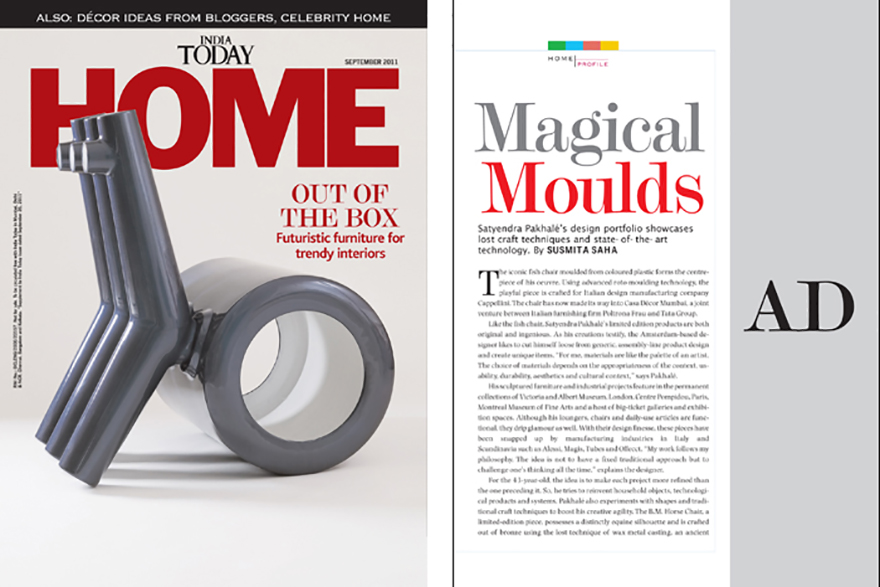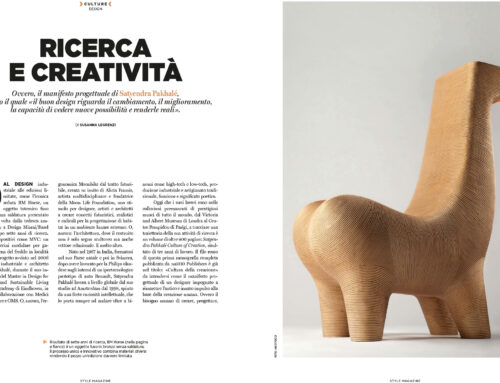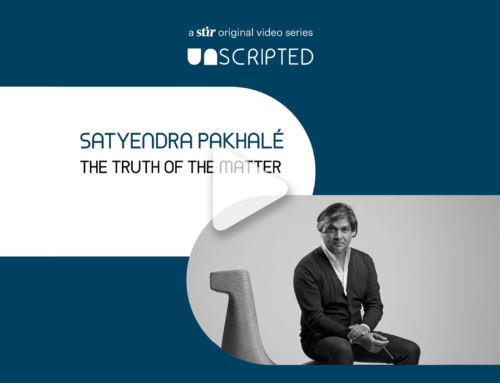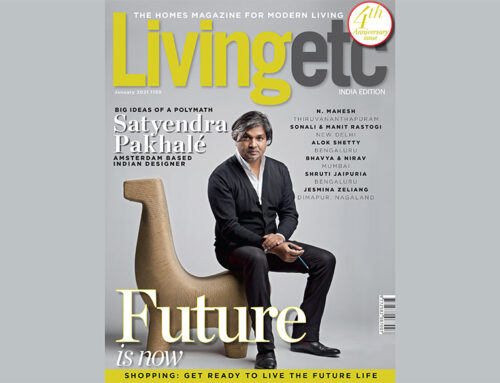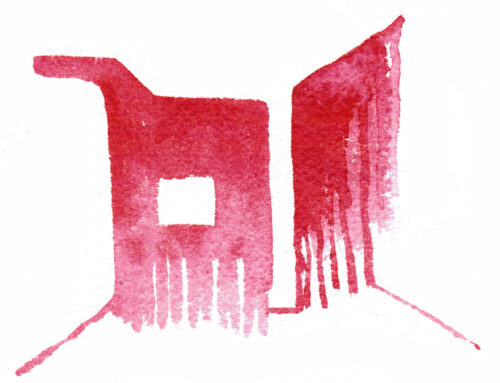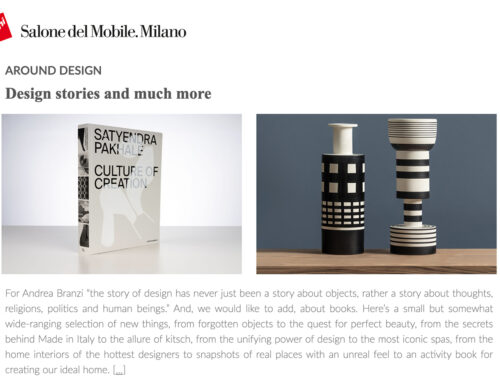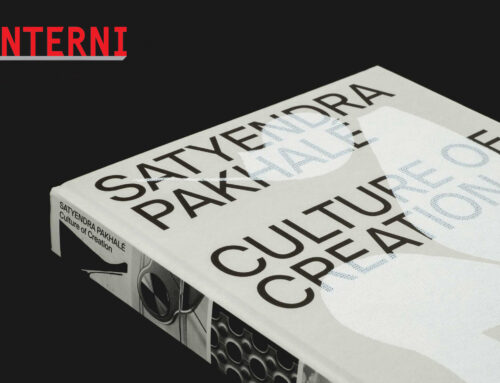Satyendra Pakhalé’s design portfolio showcases lost craft techniques and state- of- the- art technology.
The iconic fish chair moulded from colored plastic forms the centre- piece of his oeuvre. Using advanced roto moulding technology, the playful piece is crafted for Italian design manufacturing company Cappellini. The chair has now made its way into Casa Décor Mumbai, a joint venture between Italian furnishing firm Poltrona Frau and Tata Group. Like the fish chair, Satyendra Pakhalé’s limited edition products are both original and ingenious. As his creations testify, the Amsterdam-based de- signer likes to cut himself loose from generic, assembly-line product design and create unique items. “For me, materials are like the palette of an artist. The choice of materials depends on the appropriateness of the context, us- ability, durability, aesthetics and cultural context,” says Pakhalé. His sculptured furniture and industrial projects feature in the permanent collections of Victoria and Albert Museum, London, Centre Pompidou, Paris, Montreal Museum of Fine Arts and a host of big-ticket galleries and exhibition spaces. Although his loungers, chairs and daily-use articles are functional, they drip glamour as well. With their design finesse, these pieces have been snapped up by manufacturing industries in Italy and Scandinavia such as Alessi, Magis, Tubes and Offecct. “My work follows my philosophy. The idea is not to have a fixed traditional approach but to challenge one’s thinking all the time,” explains the designer. For the 43-year-old, the idea is to make each project more refined than the one preceding it. So, he tries to reinvent household objects, technological products and systems. Pakhalé also experiments with shapes and traditional craft techniques to boost his creative agility. The B.M. Horse Chair, a limited-edition piece, possesses a distinctly equine silhouette and is crafted out of bronze using the lost technique of wax metal casting, an ancient process that has been practiced in central India for centuries. The chair has been presented at Design Miami Basel in Switzerland this year. Despite having a cultural context for most of his designs, Pakhalé favors the use of technology. The KUBU chaise longue is a labour of love for the maestro, which has been created using two cutting- edge technologies. The wood selection and hacking process were digitally planned using engineering data generated from the product’s first sketch model. Subsequently, it was fine tuned on the CNC (Computer Numeric Control) 5 axis milling machine in Italy. At a later stage, Italian artisans sculpted the surface design conceptualized by Pakhalé. “I am fascinated by technology,” he says, adding that design and technology always go hand in hand. Pakhalé, best known for cross-cultural references in his designs, continues to affirm his creative allegiance to India, the country he was born in. “Though I have a lot of exposure to different cultures and ways of living, I am Indian. The country is a part of me, my thinking and most of my creations.” India has been the cradle of his design training. After getting his Masters degree at the Industrial Design Centre in Indian Institute of Technology (IIT) Mumbai. Pakhalé won an international scholarship competition in 1992 that earned him a place at the Art Centre College of Design, Switzerland. Later, he joined the New Business Creation team at Philips Design in Holland. While working with the electronics giant, Pakhalé designed products for new technologies in the area of digital communication and transportation design. He set up his own design practice in Amsterdam in 1998 and has been involved in industrial projects and creation of everyday objects since then. Some of the designer’s commercial endeavors are compulsively concept-driven. The window setting of luxury brand Tod’s New York Madison store has been conceived by the designer to highlight the well-crafted quality of the products. “I wanted to display the retail-ware almost like pearls in shell-like forms,” he says. The label has used this exhibition concept for all their flagship stores across the world, including New York, Delhi, Milan and Tokyo. Other successful design ventures include his ceramic chair line. Part of the Playing with Clay project for the European Ceramics Work Centre in Holland, the chairs had been initially constructed from handmade prototypes. This led to the development of pressure-cast moulds for industrial production. Apart from manufacturing innovation, every piece of this range encourages dialogue be- tween computer technicians, artisans and designers. Besides furniture, there’s a certain buzz about his household articles and industrial design products as well. The add-on radiator, designed for Italian firm Tubes, is a unique heating system that blends effortlessly with the décor. Allowing air to pass through the whole surface of the radiator, it can regulate room temperature faster, using less power. The home appliance was made part of Centre Pompidou, Paris’ permanent collection earlier this year. All his industrially-produced designs are retailed by the respective manufacturers in the range of 200 (`13,074) to !15,000 (`9.8 lakh) while the limited edition pieces are available at Gallery Gabrielle Ammann, Germany, priced between !30,000 (`19.6 lakh) and !150,000 (`98.08 lakh). What makes the designer different is his imagination. Shapes are constantly tweaked, lending a new dimension to them and offbeat materials like carbon fibre and ceramic are pressed into use. However, the maverick says that the off-kilter themes are never intentional, instead they are the result of a distinct creative process. And for Pakhalé, it’s just another way of celebrating the unexpected.
